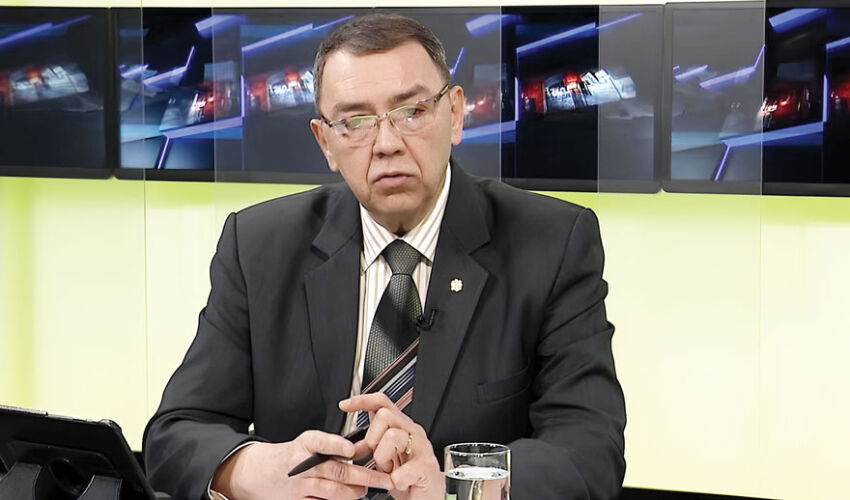
Vladimir Golovatiuc
The debt is red
We have to state that at the end of the first quarter, the total public debt (internal and external) is growing ahead of the plan. With the figure of 136.4 billion lei set by the state budget for the end of 2025, it is already approaching it at a rapid pace in just a quarter of the term.
The dynamics is as follows: the total state debt at the end of 2023 – 104 billion lei, at the end of 2024 – 121.4 billion lei (+16.7%), at the end of March 2025 – 123 billion lei. – 123 billion lei. With the predominant volume of external debt, both components of the state debt structure are growing unevenly. The internal debt liabilities of the state are only increasing over time, and at a faster rate than the growth of the internal debt. But the external debt is growing by leaps and bounds.
This is influenced by both the exchange rate difference and the strict adherence to the repayment schedule to the main foreign creditors of the country. The main creditors – IMF, WB, European Commission, Canadian government, French Development Agency, European Investment Bank, etc. – carefully monitor the amounts of external debt. – The main creditors – the IMF, the WB, the European Commission, the Canadian government, the French Development Agency, the European Investment Bank, etc. – carefully monitor that the amounts of foreign borrowings ensure repayment.
Economist Vladimir Golovatiuc sees this as the reason for the reduction of the external debt at the end of the first quarter: the total state debt decreased by 650 million lei, as the external state debt in lei equivalent decreased by 2.1 billion lei. Thanks to the exchange rate difference and the payment made.
The external public debt at the end of 2024 crossed the $4 billion mark and amounted to $4.190 billion against $3.696 billion at the end of 2023. According to the Finance Ministry, the external public debt amounted to $4.223 billion at the end of March.
The external debt denominated in the national currency was reduced by a decent amount during the month. The “falling” dollar was very helpful here. “Compared to February, the external public debt amounted to 76.2 billion lei against 78.3 billion lei. This was entirely due to the depreciation of the US dollar, and not due to the currency component,” the economist said. – The physical volume, denominated in foreign currency, did not increase much, but rose from $4.202 billion on February 28 to $4.223 billion.
According to Golovatyuk, “such an insignificant growth is primarily due to the fact that the return of previously obtained loans 3.8 times exceeded the receipt of new loans – $75.3 million against $19.9 million, i.e., to put it simply, we return more than we receive. Nevertheless, both in lei and dollar equivalent, the external debt has grown by almost 20% over the year, and over the last 4 years it has almost doubled (+73%)”.
It turns out that the weakened dollar as a result of the US trade war (from 18.64 to 18.05 MDL) has helped a lot to save the funds used for debt repayment. The “stronger” the national currency – the more favorable the credit obligations. We should pay tribute to the NBM, which is interested in preventing its strong depreciation.
A devalued leu would immediately discourage borrowing so much. И… would finally start domestic production! Because with a strong national currency, which is not backed by real production of goods and services, it is always more profitable to import for domestic consumption than to produce and earn on export.
The population is suggested to borrow more often
The situation with the internal state debt is also becoming critical. At the end of March, the internal state debt increased by another 1.450 billion lei and amounted to 46.749 billion lei. At the same time, its growth rates planned by the state budget this year will outpace the growth rates of the total state debt. The total state debt will increase by 12.4%, while the domestic debt will increase by 21%.
According to the plan, the internal financing of the state budget for 2025 will be carried out by issuing state securities (SS) on the primary market in the amount of 45,771.2 million lei. Also, through direct placement among individuals in the amount of 600 million lei. Net internal financing will amount to 8,130.0 million lei, taking into account that the difference in the sources of financing will be used for debt repayment during the year.
Government bonds and treasury bills will continue to be issued in local currency at market rates of return. Accordingly, the average rate is assumed to be 5.5% per annum, with a maturity structure of about 90% for short-term GOs and 10% for long-term GOs. CS with fixed interest rate depending on demand and market fluctuations will be considered acceptable.
In March the average yield of GS made 9.65%, and for annual securities – 9.93%. Compared to February, the average rate of GS yields grew by 1.6 p.p. As a result, sales exceeded February volume by 48%. In March, banks credited the government with 4 bln lei, having repurchased 70% of the invested amount from the previously issued securities.
According to economist Vladimir Golovatiuc, demand for SS significantly exceeded supply at all March auctions. “The Ministry of Finance did not experience difficulties with the placement of government securities. The demand for government securities was high, and part of the demand even remained unsatisfied. It mainly affected SS with longer maturity. Therefore, I believe that the demand for GS will remain high in the future as well. Since at recession in the economy the government has not only to lend, but also from time to time to adapt the supply to finance urgent budget expenditures. Decline in GS yields is already coming”, – the expert believes.
Since the trend of prevailing demand is expected, the government will probably manage to place GS on more favorable terms. That, however, as experts believe, will not greatly affect the volume of domestic government debt. They try to support the demand by involving the population in lending to the government. On the one hand – development of instruments for investment, on the other hand – additional volumes. Everyone is pleased.
Since April 2025. The Ministry of Finance has changed the procedure for issuing SS through the digital platform eVMS.md for individuals. The frequency of issuance broadcasts will become monthly, instead of quarterly, as it was until now. The possibility to participate monthly in pre-determined placement sessions during the year is complemented by the lengthening of the debentures.
VMS repayment options will be diversified. For the first time, 3-year fixed-rate government bonds will be introduced, alongside the existing 2-year fixed-rate bonds.
The volume of investments in state bonds during the previous subscription period through the platform launched last year more than tripled the indicative volume of the initial issuance, reaching 150.9 million lei. Citizens invested 104.5 million lei in state bonds with a maturity of 1 year and a yield of 6.85% (30.7% of the total volume) and 46.3 million lei in state bonds with a maturity of 2 years and a yield of 6.77%.
“Given the upcoming elections and the stagnation in the economy, the government’s financial needs will inevitably grow. Borrowing on the domestic market will also grow. The increase in total government debt since the beginning of the year is already largely due to the growth of domestic debt as a result of the issue of government securities and favorable securities market conditions,” says economist Vladimir Golovatyuk.











